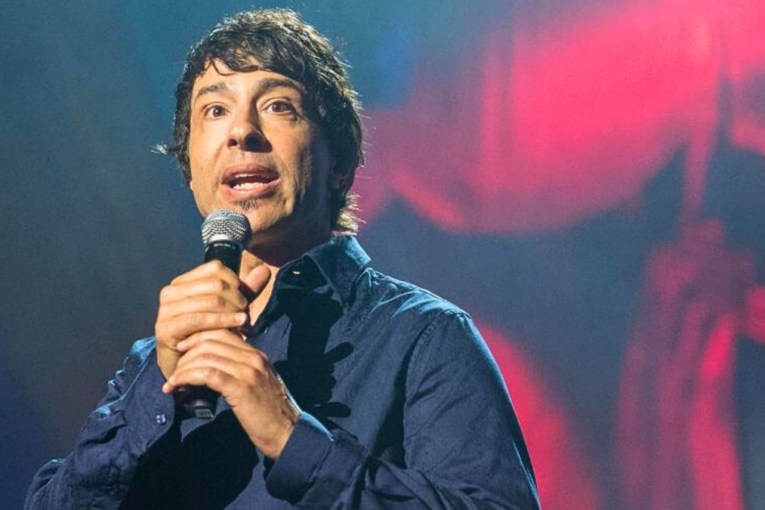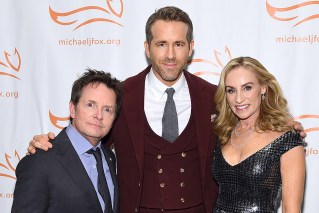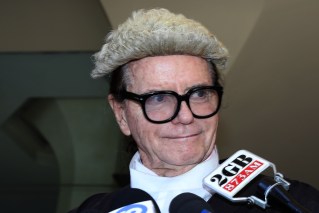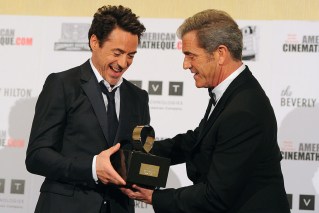Iconic Australian actor and author Barry Humphries dies aged 89

Barry Humphries, the actor who created such iconic Australian characters as Dame Edna Everage, Sir Les Patterson and Sandy Stone, has died at the age of 89.
Humphries passed away on Saturday at Sydney’s St Vincent’s Hospital, where he was being treated for complications from hip replacement surgery earlier this year.
As recently as Friday, his publicist Wendy Day denied reports that Humphries had become unresponsive, saying he was resting as doctors looked after him.
Humphries, who has lived in London for decades, came back to Sydney in December for Christmas. He subsequently suffered a fall in February that led to the “painful” hip replacement.
His condition began to deteriorate last week and his loved ones were summoned to his bedside.
Humphries was surrounded by his immediate family, including his wife of 30 years Lizzie Spender, his children Tessa, Emily, Oscar and Rupert, and 10 grandchildren.
“He was completely himself until the very end, never losing his brilliant mind, his unique wit and generosity of spirit,” his family said in a statement.
Humphries spent more than 70 years on the stage and was “an entertainer to his core” who loved his audiences and never took them for granted.
But he was also a painter, author, poet and collector of art.
“He was also a loving and devoted husband, father, grandfather, and a friend and confidant to many. His passing leaves a void in so many lives,” his family said.
“The characters he created, which brought laughter to millions, will live on.”
- Related story: ‘Galaxy of personas’: Albanese leads tributes amid a global outpouring for Barry Humphries
Born and raised in Melbourne, Humphries delighted and outraged audiences for decades as an entertainer and man of a million masks — his most famous, Dame Edna Everage.
Also in his celebrated repertoire were the gross Sir Les Patterson, Australia’s cultural attache to the Court of St James and the melancholy and rambling Sandy Stone.
Humphries was also a respected character actor with many stage and screen credits, an author of novels and autobiography, and an accomplished landscape painter.
But the real Humphries — beyond his four marriages, reformed alcoholism and immense hard work and constant movement as he took his shows around Australia and the world — remained elusive.
John Barry Humphries was born on February 17 1934.
His parents were comfortable, loving and strait-laced. They must have wondered about their eldest son, whom they called Sunny Sam. His mother used to tell him to stop drawing attention to himself.
Before he’d finished at Melbourne Grammar, Humphries was more interested in art and second hand bookshops than football or cadets. At 16 his favourite author was Kafka and he “felt a little foreign”.
He spent two years at Melbourne University, where he embraced Dadaism – the subversive, anarchic and absurdist European art movement.
Humphries joined the Melbourne Theatre Company and while touring Victoria created Edna Everage as a dowdy, complacent Moonee Ponds housewife. That Edna was a long way from the internationally feted, egomaniacal superstar she was to become.

Dame Edna was Humphries’ most-enduring, and celebrated, creation. Photo: Getty
In 1959 he settled in London and was soon working in Peter Cook’s comedy venue The Establishment. He played Sowerberry in the original London production of Oliver in 1960 and repeated the role on Broadway. He appeared with Spike Milligan and William Rushton in Treasure Island.
Humphries, with New Zealand artist Nicholas Garland, created the Barry McKenzie comic strip for the satirical magazine Private Eye in 1964.
Bazza was a boozy parody of the ugly Australian abroad, full of phrases like the “technicolour yawn”, “siphon the python” and “the one-eyed trouser snake”, but also a foil for the pompous, devious and hypocritical Poms.
When the strips came out as a book, the Australian government banned it because it “relied on indecency for its humour”. Humphries professed delight at the publicity and implored authorities not to lift the ban.
By then Humphries’ drinking was out of control. In Melbourne in late 1970, he was charged with being drunk and disorderly and was rolled in a city gutter. He finally admitted himself to a hospital specialising in alcoholism for the treatment that would turn him into a lifelong abstainer.
In 1972 came the first Barry McKenzie film — financially supported by the Australian government, despite the earlier ban. It was savaged by the critics, largely because they trembled at what the world’s first film to feature full frontal vomiting would do to Australia’s image overseas.
But it was a popular success and, according to Phillip Adams, sparked a renaissance in the moribund Australian film industry.
A sequel two years later included Gough Whitlam knighting Edna, who was McKenzie’s aunt.
By then the Dame was morphing from her original Mrs Norm Everage persona into the exotically-dressed, possum-greeting, gladioli-tossing, globetrotting celebrity.
Outside Australia she struggled for a while, with her early London appearances being panned.
Subsequent shows and television appearances gained her a cult following — and accusations that Humphries must hate Australia.
The breakthrough was Housewife, Superstar! at London’s Apollo Theatre in 1976. The lobby had signs like “Paraplegic Toilets 8th Floor. Please use the stairs.” Dame Edna was introduced by, on debut, Sir Les (“I’m as full as a bull’s bum”) Patterson. Humphries has said that Sir Les was the part of him that never stopped drinking.
The Dame picked out “possums” from the audience and make them squirm —- the “Senior” drugged for his evening leave from the twilight home; or for an exchange of confidences, like “My husband has never seen me naked, nor has he expressed the least desire to do so.” It ended in a blizzard of gladdies.
It wasn’t until 2000 that New York was conquered with Dame Edna: The Royal Tour, which won a special Tony award and two National Broadway Theatre awards.
Dame Edna was more than Humphries in drag. She was a fully formed character, with family and background, memories and tastes. She always denied she was a fiction, and spoke of Humphries as her manager.
Humphries has said: “When Edna’s on stage I sometimes get that rather spooky thing where Edna speaks something that I couldn’t have written.”
Humphries appeared in many films, from The Getting of Wisdom to Finding Nemo, where he voiced Bruce the shark, and the Kath and Kim telemovie. In the mini-series Selling Hitler, he had a cameo role as Rupert Murdoch. A rare flop was Les Patterson Saves the World, where he played the title role.
His books, apart from spin-offs from his shows, included the novel Women in the Background, and two memoirs.
In 2015, aged 81, he was artistic director of the Adelaide Cabaret Festival.
Humphries remained wedded to the stage until the very end, even as his health deteriorated.
In March this year, he reassured the Sydney Morning Herald he would not abandon his upcoming Australian tour, despite the “agony” he was experiencing from a hip replacement the month before.
Humphries married four times. The first, to Melbourne actress Brenda Wright when he was 21, was brief. Just before he left Australia he married New Zealand dancer Rosalind Tong, with whom he had two daughters.
In 1979 he married artist Diane Millstead, with whom he had two sons. His fourth wife was Lizzie Spender, daughter of the poet Stephen Spender.
-with AAP








